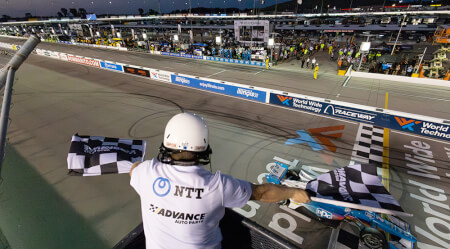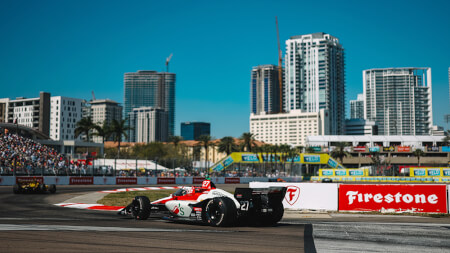March 26th 2025
IndyCar investigating hybrid glitches at Thermal
The lead-up to the Thermal Club IndyCar Grand Prix was busy for some teams that were forced to replace energy recovery systems (ERS) due to internal wiring issues, while on Sunday, a handful of drivers had to manage overheating ERS units with temperatures surpassing their safety thresholds.
Ed Carpenter Racing’s Alexander Rossi and his No. 20 Chevy (main image) was the first lightning rod for ERS problems as he was one of a number of drivers on Friday to experience wiring malfunctions inside their spec bellhousings serviced and deployed by Ilmor Engineering.
The faulty bellhousing/ERS package was removed from the No.20 after the opening practice session. Once the replacement installed, another issue emerged in the second practice session, this time with the motor generator unit (MGU), which necessitated another change.
Having identified a central issue, IndyCar distributed a technical bulletin on Saturday morning that pointed to the need to inspect wiring that could become separated from military-spec connectors, which led to more bellhousing/ERS changes.
“Basically, a harness was decoupling, and it was an easy fix, which just simply required connecting the harness and then literally using a zip tie to seal it, if you would,” Mark Sibla, IndyCar’s Sr. VP of competition and operations, told RACER. “The fix was easy, but it did require teams to pull the cars apart and get to it. So that required work on the teams’ part. And at least three units started to experience that issue on Friday.”
For reasons that are unknown, the majority of Thermal’s ERS problems were experienced by Chevy-powered teams.
A Honda representative told RACER “one or two minor things” were encountered by their teams throughout the event, but in the race, it was a cluster of Chevy drivers who dealt with ERS-related setbacks.
In some instances, the issues were self-induced by teams running too many airflow blockers on the back of the radiators — including the new, small radiators used to cool the ERS units — that sent the systems into ‘limp mode.’ By receiving less airflow than the conditions demanded, the supercapacitor-based energy storage systems (ESS) that hold the power and release it back to the MGU behaved like phones left out in direct sunlight on a hot day, and shut down until they were adequately cooled.
For more information: www.racer.com
For more Industry News, please Click Here
For more information: www.racer.com
For more Industry News, please Click Here














